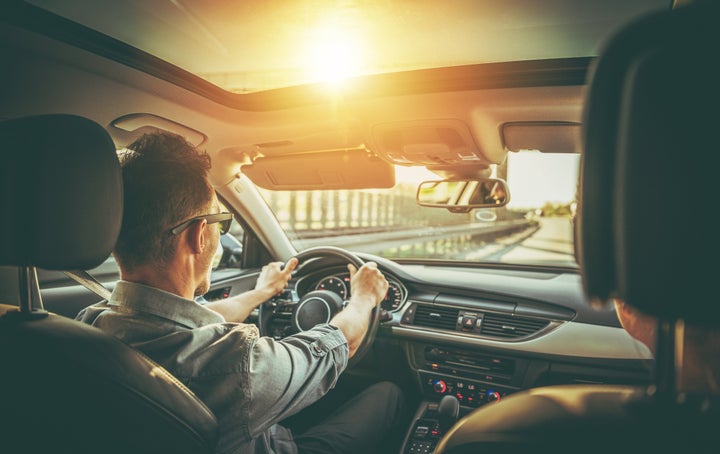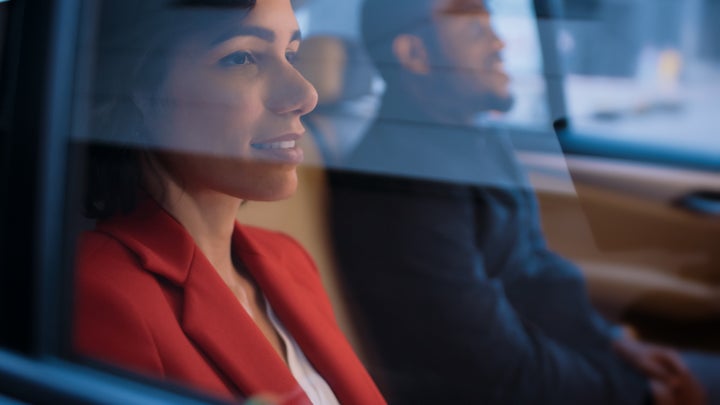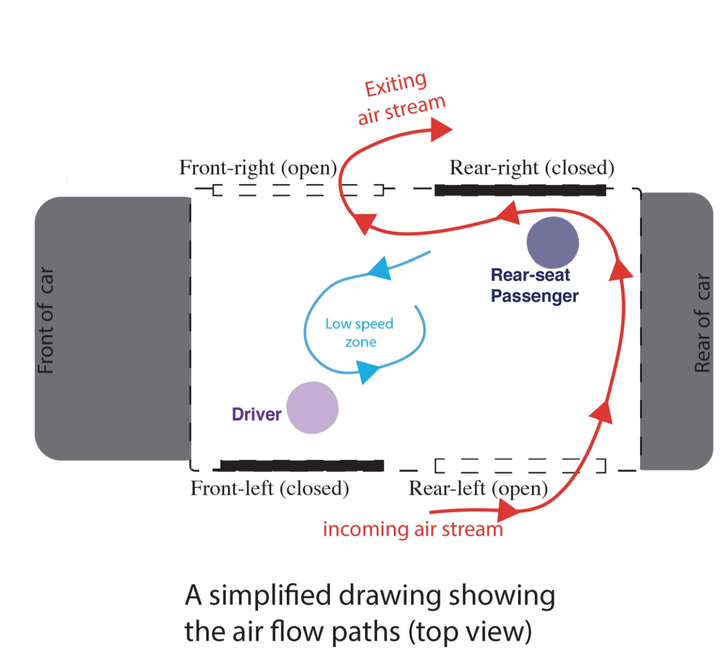
Travelling in the car with people outside your household is generally not advised right now due to Covid-19. But as Christmas approaches, it’s likely more people will be doing it to avoid using public transport.
People living in England, Wales, Scotland and Northern Ireland are advised not to car-share with people who aren’t members of their household, unless they have no other option or there is an exemption – for example, they need to do it for work purposes.
Over Christmas, people are allowed to travel to meet those in their Christmas bubble and return home between 23 and 27 December, while anyone travelling to or from Northern Ireland may travel on 22 and 28 December.
So, is there a way to stay safer in a car if you’re travelling with someone you don’t live with? The answer is yes, although no journey is completely risk-free.
Firstly, there are a few things we know limit transmission of the virus – wearing face masks and keeping the number of people you mix with, and the duration of time spent together, down to a minimum. So, cramming a car with people from different households isn’t the best idea. Sharing the load between a couple of cars would work better – and shorter car trips are generally lower risk.
Once you’re in the car, your instinct might be to roll down the window next to you – but a new study, published in the journal Science Advances, has shown this isn’t always the best way to protect yourself.
Opening all windows, along with bringing in fresh air through the vents, is thought to create the best environment to reduce the risk of transmission by increasing ventilation. And keeping all the windows up and using only the recirculating air mode is likely the riskiest option, so should be avoided.

However, lead author Varghese Mathai was aware it’d be pretty hard to keep all car windows open in winter or when it’s tipping it down, so wanted to examine what happens to aerosolised particles exhaled by people inside the car under various different versions of open and closed windows.
The study was conducted with ride-sharing in mind. It assumed there’d be one driver in the front and one passenger seated in the back on the opposite side, to provide the best possible spacing between the occupants.
“One might imagine that people instinctively open windows beside them while riding with a co-passenger during the pandemic,” said lead author Varghese Mathai, assistant professor of physics at University of Massachusetts Amherst. “That may not be optimal – though it’s better than opening no window.”
Researchers had the idea that if you open the rear and front windows on opposite sides of the car, then you might create an air current from the rear to the front of the cabin, and crossing through the middle.

The researchers hypothesised if all windows can’t be left open, opening the front window on the right side and the rear window on the left side might best protect the driver and passenger from the hundreds of aerosol particles released in every human breath. (In the UK, this would be the opposite, as our steering is positioned on the right-hand side.)
The findings were first made using computer simulations, and later backed up using smoke visualisation and field tests.
“To our surprise, the simulations showed an air current that acts like a barrier between the driver and the passenger,” said Mathai, who likened this phenomenon to the air curtain created by a draft blown down vertically at some supermarket entrances, which prevents outdoor air from mixing with indoor air, even if the entrance door is open.
“While these measures are no substitute for wearing a face mask while inside a car, they can help reduce the pathogen load inside the very confined space of a car cabin,” he said.
Therefore, the research suggests opening the windows farthest from the driver and the back-seat passenger might offer the best benefits. The findings may provide “Covid-19 risk reduction measures” for the millions of people car-sharing worldwide, the researchers said.